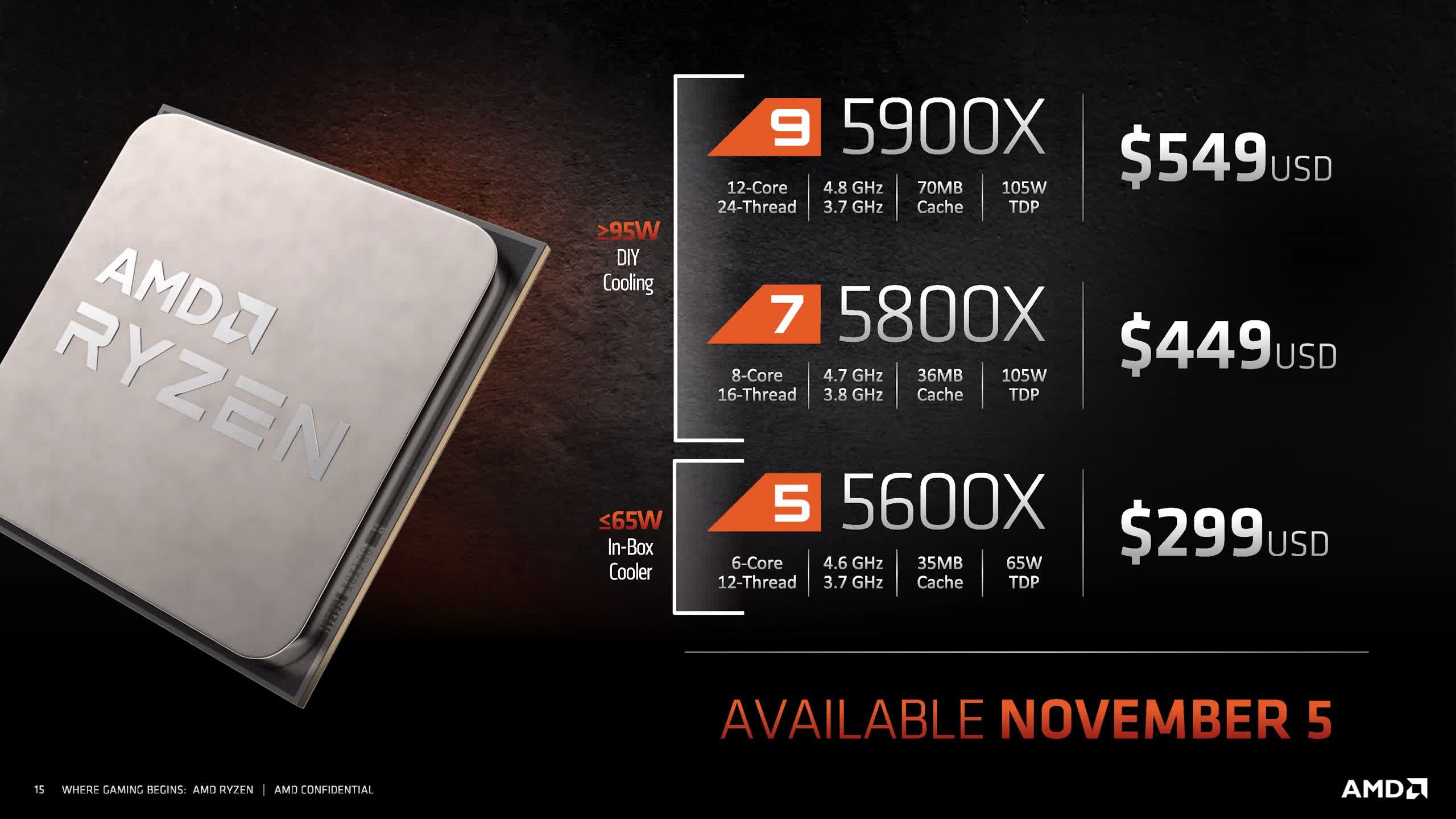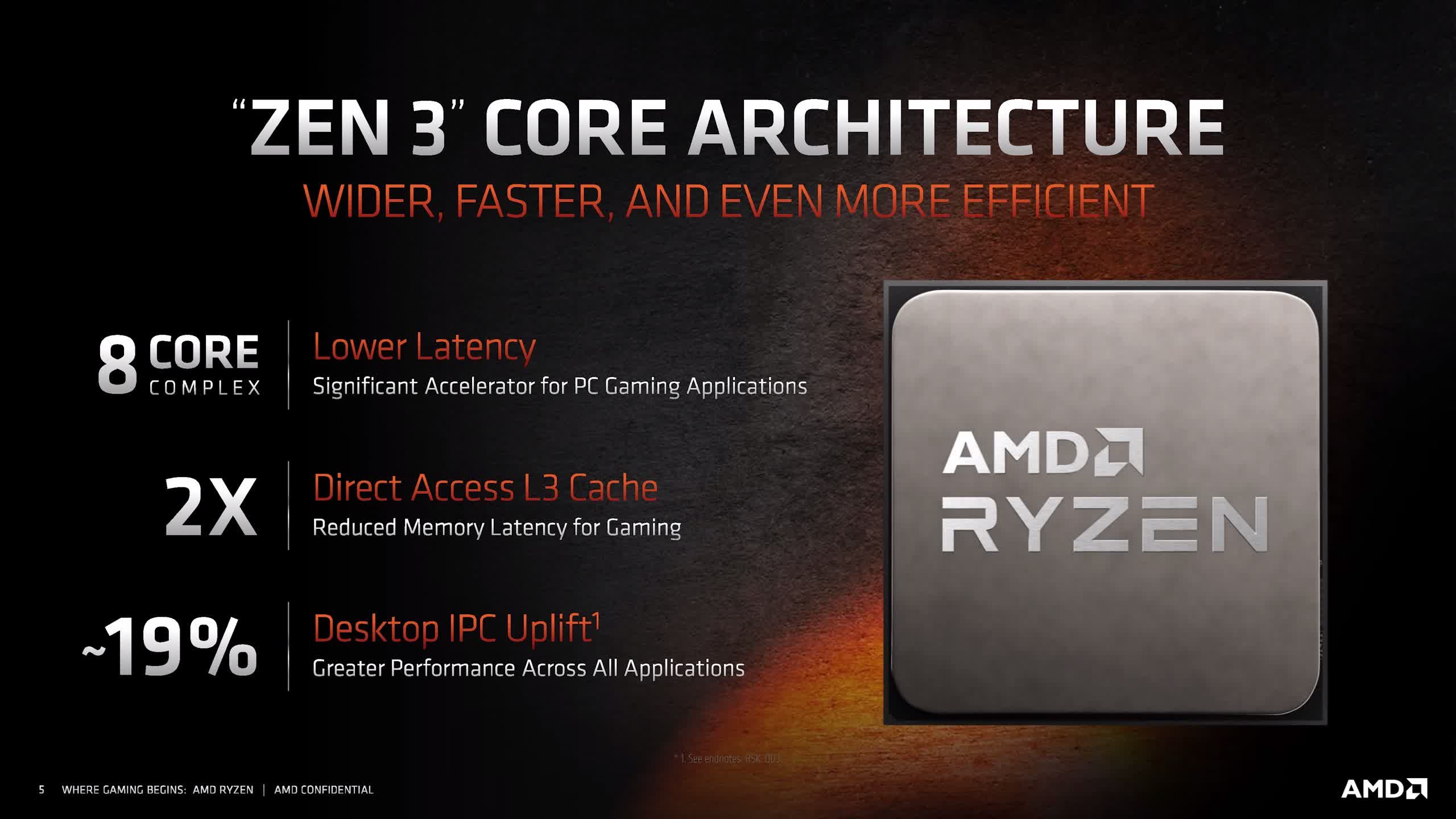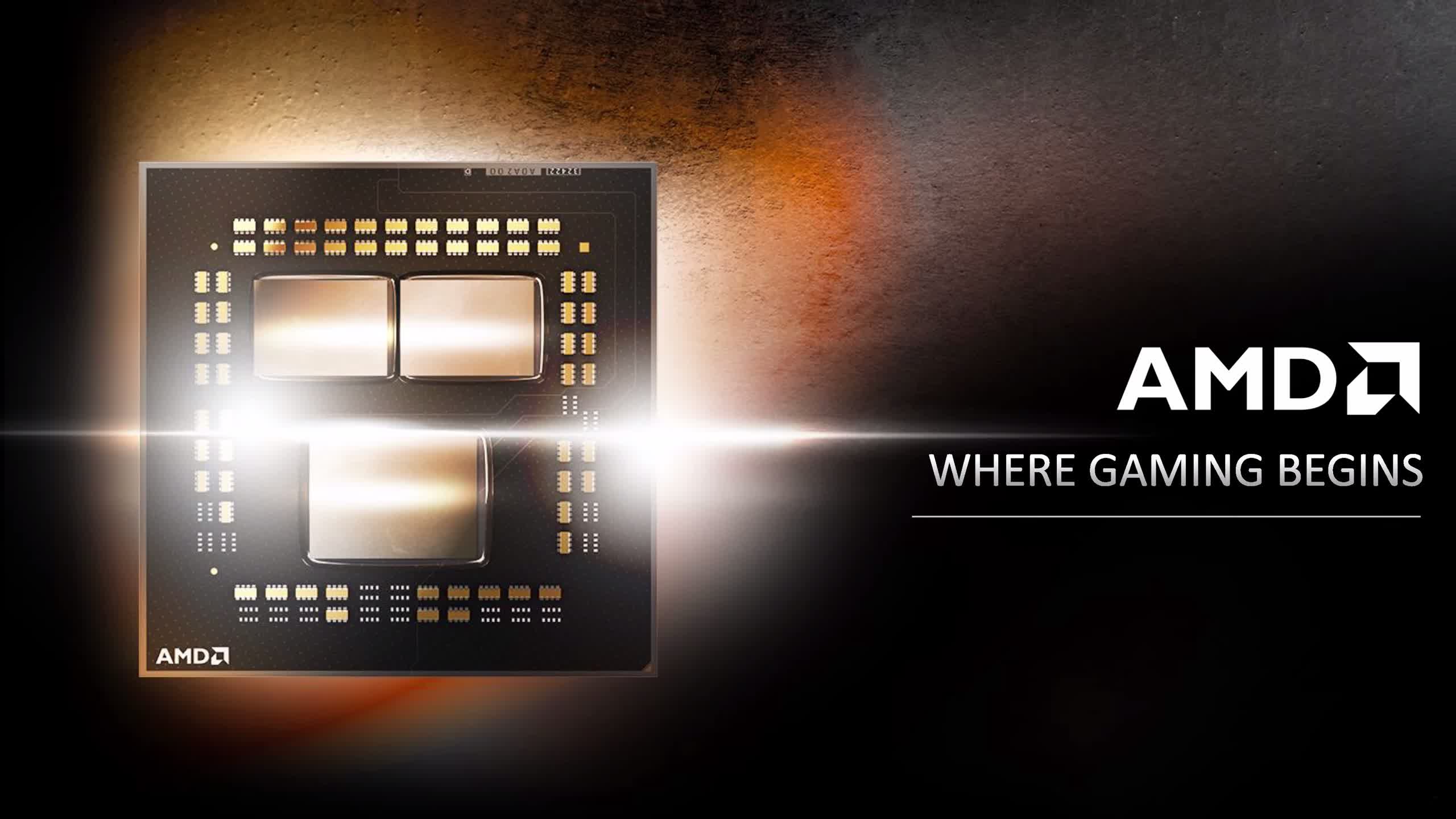AMD has unveiled their next generation desktop processors. They have announced the Ryzen 5000 CPU series based on Zen 3 architecture. Four more models have been announced which starts at a price of $299 up to $799.
At first, there is Ryzen 9 5950X that has 16 cores and 32 threads. The chip is capable of 3.4GHz base clock and 4.9GHz boost clock. AMD has said that the 5950X has the highest single and multi-threaded performance in any mainstream desktop CPU. The CPU has 64MB of L3 cache speed among two chiplets. It has around 105W TDP.
The 5950X has been priced at $799 and has also replaced the 3950X that was priced at $749. It will compete with 18-core Intel Core i9-10980XE.
The second in this series is the Ryzen 9 5900X that has 12 cores and 24 threads. It is capable of 3.7GHz base clock and 4.8GHz boost clock. AMD has said that it is the best CPU available for gaming in the market. It has 64MB of L3 cache speed among two chiplets and 105W TDP.

The 5900X has been priced at $549 and has replaced the 3900X priced at $499. It would compete with 10-core Intel Core i9-10900K.
Next in this series is the Ryzen 7 5800X that has 8 cores and 16 threads. This one can do 3.8GHz as base clock and 4.7GHz as boost clock. This single chiplet design has eight cores and 32MB cache on single CCX and 105W TDP. It has been priced at $449 and has replaced the 3800X priced at $399. It would compete with 8-core Intel Core i7-10700K.
On the last, there is Ryzen 5 5600X. It has 6 cores, 12 threads, base clock of 3.7GHz and boost clock 4.6GHz. It has 32MB of L3 cache on single chiplet and reduced TDP of 65W. 5600X is the only one that comes with a stock cooler in the box. It has been priced at $299 and has replaced 3600X priced at $249. It would compete with 6-core Intel Core i5-10600K.
AMD has not revealed the details about the changes in the Zen 3 architecture except that this is a new architecture built from ground up and not an evolution like the last two architectures. The company has been touting 19% improvement to IPC or instructions per clock which is used as a measure for the efficiency of the processor. The figure of 19% comes from avenging a large number of gaming and workstation tasks and as a result of this, it is not 19% in every task done by the user.
As there has been improvement in efficiency, AMD has increased the performance without increase in power consumption. The new Ryzen chips have the same TDP and board power draw like previous generation chips which means that the user is getting more work done for the same level of energy consumed.
There has been a few changes in the design of the chiplet. AMD uses chiplets instead of monolithic design used by Intel that allows it to pack more cores but only through increased latency because of communication delay between CCX modules.
There are chiplets in Zen 3 processors that can have 6 or 8 cores each with 32MB of L3 cache and chips like 5800X and 5600X can have single CCX with all its cache and reducing the internal latency and having to resort to writing in system memory which is much more slower. The higher core parts like 5900X and 5950X are affected to a lesser extent.

The prices have also increased by $50. There are also no non-X SKUs this year. AMD said that they don’t have plans to launch more SKUs at this point of time but it doesn’t mean that they would not launch successors to Ryzen 3 3100 and 3300X. But we might not get to see Ryzen 5 5600 or Ryzen 7 5700X. It can be clearly seen that AMD might have decided to do away with non-X SKUs and increase the price over the previous X SKUs and this might not be accepted by everyone despite the boost in performance.
AMD is now competing with itself as previous generation parts are cheaper now and seems more attractive for some buyers, especially on older motherboards. The parts are similarly priced for Intel but they have other issues like lack of stock for high-end models that has caused the price for available units to be increased.
However, AMD has unveiled some gaming figures during their keynote. Well, its hard not to be impressed with what has been achieved by AMD here. The 5900X used by AMD for its comparison with 2080 Ti and 16GB DDR4 3600MHz memory against 10900K on the same setup showed better results among the board than the Intel part. This might have indicated that the decisive victory of Intel over AMD in terms of gaming is about to end. There is no point to show the productivity results as AMD is already ahead in there.
AMD also provided a sneak peek at the upcoming Radeon RX 6000 series graphics card. An unspecified model was shown with a few performance numbers. The cards will be unveiled later on 28th October.
The new Ryzen 5000 series will be available from 5th November for purchase. All of them would be compatible with motherboards that are running B550 and X570 chipsets at launch. The B450 motherboards will receive a beta BIOS update in January 2021 which would allow users to use the new chipsets on selected B450 motherboards.

